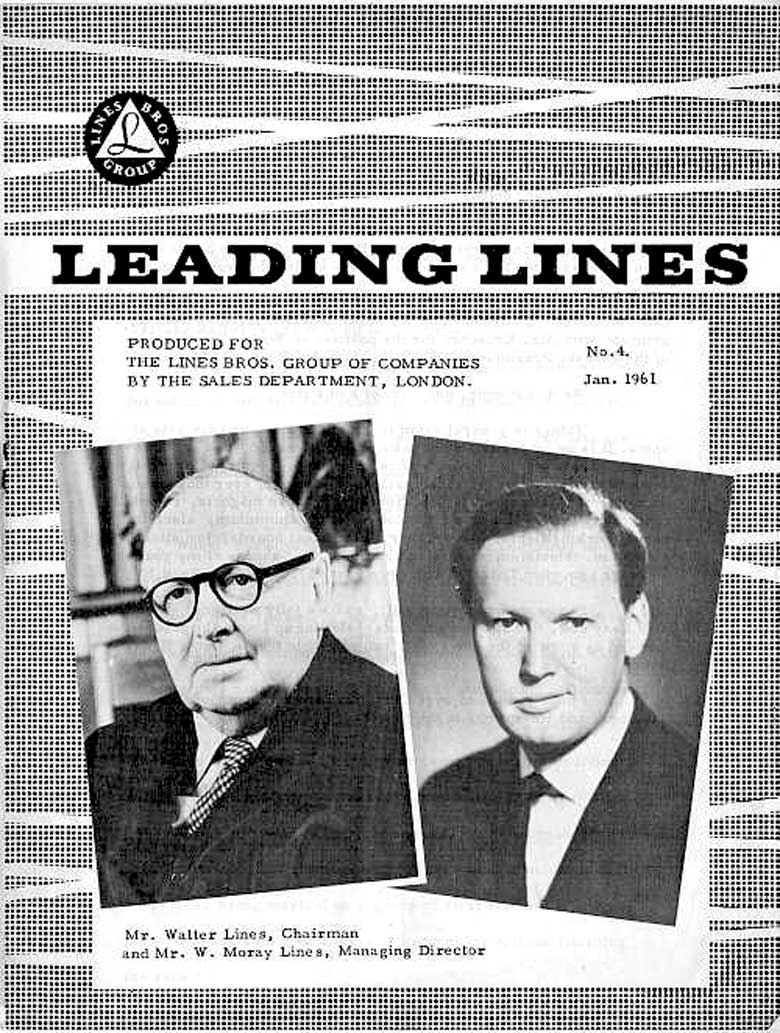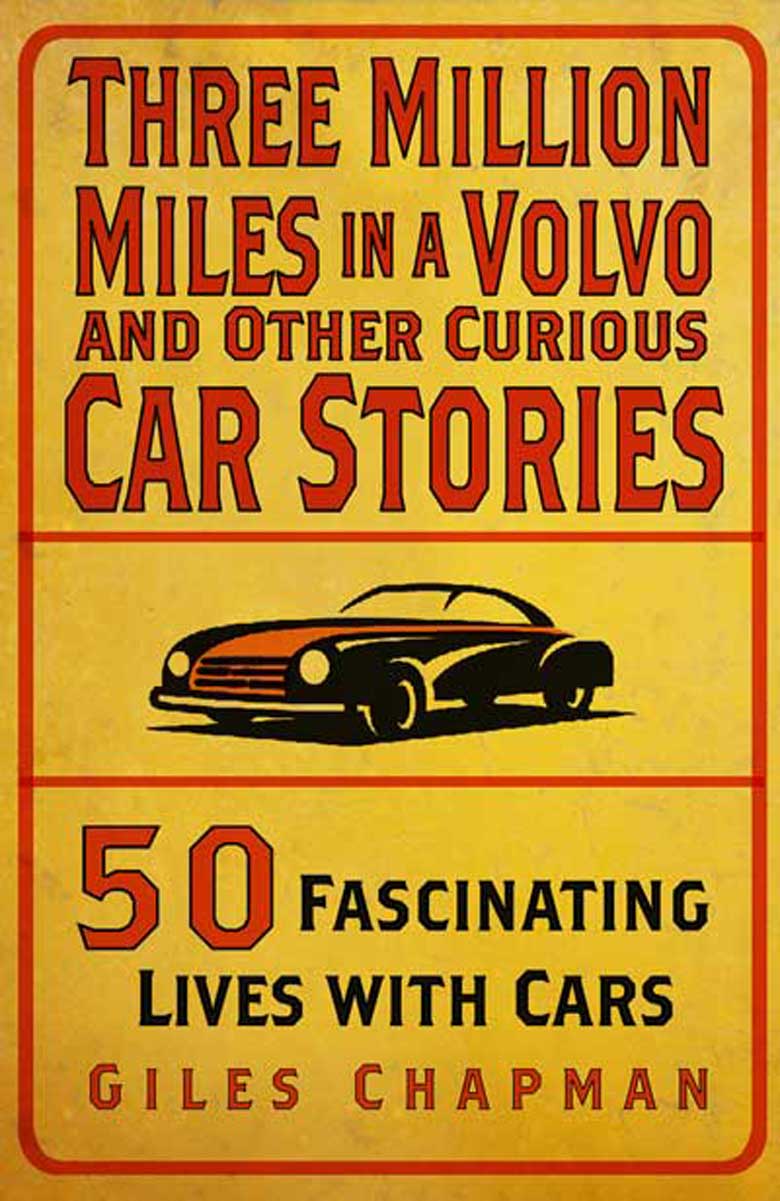“Three Million Miles in a Volvo and Other Curious Car Stories” arrived here recently and I immediately found Giles Chapman to be a wonderful writer, expertly crafting little known automotive intrigues into literary gems. I couldn’t wait to ask him if we could republish a few chapters in VeloceToday, in exchange for the hopes that our audience would enjoy his work as much as I did. (And therefore buy his books!) Our first selection is typical of his style; take a little known figure and with brevity, knowledge and great skill, tell the reader why the subject is important to us, even if we may not have heard of them. For example, who is Walter Lines and what has he to do with slot cars?-Ed.
By Giles Chapman, from his book, “Three Million Miles in a Volvo and Other Curious Car Stories“
Walter Lines’ first job was cleaning up cows’ tails before they could be cured and nailed to the painted wooden rumps of rocking horses. Born in north London in 1882, he wasn’t quite the unlucky urchin of Victorian, up-the-chimney folklore. But he was obliged to start work in the Tottenham family toy firm G&J Lines, started by his father Joseph and his uncle George, just like his brothers William and Arthur. Each was 14 when he tossed aside his schoolbooks and got stuck in.
The Lines family made wooden toys, and so Walter was enrolled in evening classes to learn carpentry and cabinet-making. This young man, however, had something special about him. He’s thought to be the inventor of the scooter – that foot-propelled two-wheeler beloved of today’s hipster Millennials – which he created aged 15 in 1897; he didn’t patent it, and apparently endured derision from his elders, who thought it wouldn’t catch on…
Walter’s drive came into its own in 1905 when uncle George died and he and William became the firm’s joint managing directors. At 23, he not only planned an efficient new factory but also designed all the toys it would make. He fought in Italy and France in the First World War and became a Royal Horse Artillery Company captain, with a glowing mention in dispatches for his leadership. Understandably, Walter wanted life on his own terms in peace-time. In May 1919 he broke free of the family company and with William and Arthur established Lines Bros Ltd as an independent toy firm, borrowing £28,000 from Lloyds Bank for their start-up.
![]() As managing director and chief designer, no-one could stand in the way of his good ideas, and one of the most successful products in their output from a factory in London’s Old Kent Road was a range of pedal cars, aimed at middle-class children whose parents were buying the real thing for the first time. Every small boy of the 1920s and ‘30s yearned for one and they helped make Walter and his siblings rich men. They turned a profit of £8000 in their first trading year and their Tri-ang brand name was derived from triangle which, of course, consists of three lines…
As managing director and chief designer, no-one could stand in the way of his good ideas, and one of the most successful products in their output from a factory in London’s Old Kent Road was a range of pedal cars, aimed at middle-class children whose parents were buying the real thing for the first time. Every small boy of the 1920s and ‘30s yearned for one and they helped make Walter and his siblings rich men. They turned a profit of £8000 in their first trading year and their Tri-ang brand name was derived from triangle which, of course, consists of three lines…
The company expanded at breakneck speed and by 1924 construction began of a vast, 27-acre manufacturing plant in Merton, south-west London that became the biggest toy factory on earth. Walter Lines packed it with mechanised conveyor belts and automated equipment for cutting wood, bending steel and pressing tinplate to massively boost the productivity of his 500 staff.
By 1935, headcount had quadrupled and the next car-driven phase opened when Walter launched his Tri-ang Minic tinplate clockwork cars and lorries. They were realistically proportioned and modelled after actual cars like Bentleys and Vauxhalls. The range continued after the Second World War when new moulding machines at Merton added the novelty of early plastic parts.
Walter launched new products constantly, including Pedigree dolls and FROG (“Flies right off the ground”) working model aircraft. Along the way, he sponged up both Hamleys toy store in London’s Regent Street and the old family business of G&J Lines.
 If you were car- or vehicle-mad in the 1940s and ‘50s, Walter Lines had an uncanny way of getting inside your head. His pedal cars and robust working models of cars, trucks and cranes fed growing mechanical curiosity; there was always something under the Tri-ang label you’d like for your birthday.
If you were car- or vehicle-mad in the 1940s and ‘50s, Walter Lines had an uncanny way of getting inside your head. His pedal cars and robust working models of cars, trucks and cranes fed growing mechanical curiosity; there was always something under the Tri-ang label you’d like for your birthday.
Lines Bros’ portfolio of factories in the UK, France and the Commonwealth burgeoned, and one of these new plants, in Northern Ireland, started making diecast Spot On models cars in 1958, as a belated competitor to Dinky and Corgi.
Walter Lines’ megalomania for buying out rivals before they became a threat to his empire was evident as far back as the 1920s, when he snapped up Birmingham’s Unique & Unity Cycle children’s bike company. In the 1950s he was on a constant takeover rampage, and one of his better buys was a little firm in Havant called Minimodels, which had just launched a slot-car racing toy called Scalextric. With Lines’ backing, Scalextric became an enormous hit, and the company replicated it on a smaller scale for its Minic Motorways range, a Scalextric-like system that could even be built into layouts with Tri-ang’s plastic electric railways.
![]() The biggest takeover of all came in 1964, when Walter Lines gobbled up Meccano, including its world-famous Hornby Trains and Dinky Toys ranges, but the bout of corporate indigestion that followed proved terminal for the greedy patient. In 1971, Lines Bros went bust after losing £4.5m the previous year, as rivals from the USA and Japan savaged its worldwide market share. Its assets were liquidated and swiftly stripped by eager property speculators. The Tri-ang brand quickly faded away.
The biggest takeover of all came in 1964, when Walter Lines gobbled up Meccano, including its world-famous Hornby Trains and Dinky Toys ranges, but the bout of corporate indigestion that followed proved terminal for the greedy patient. In 1971, Lines Bros went bust after losing £4.5m the previous year, as rivals from the USA and Japan savaged its worldwide market share. Its assets were liquidated and swiftly stripped by eager property speculators. The Tri-ang brand quickly faded away.
Old Walter had retired as chairman in 1962, the year both his brothers passed away. He adopted the title of life president and became truly the grandee of Britain’s toy industry, while his son Moray as the new chairman oversaw the firm’s decline. On 23 November 1972, Walter Lines died at his Surrey mansion.
The vanished world of Tri-ang is mostly forgotten but the car-related toys it produced are Walter Lines’ precious legacy to collectors. Minics, early Scalextric and Spot Ons – where they haven’t been mullered by their eager first owners – are among the most sought-after automobilia today’s investors can lay their sticky hands on.


